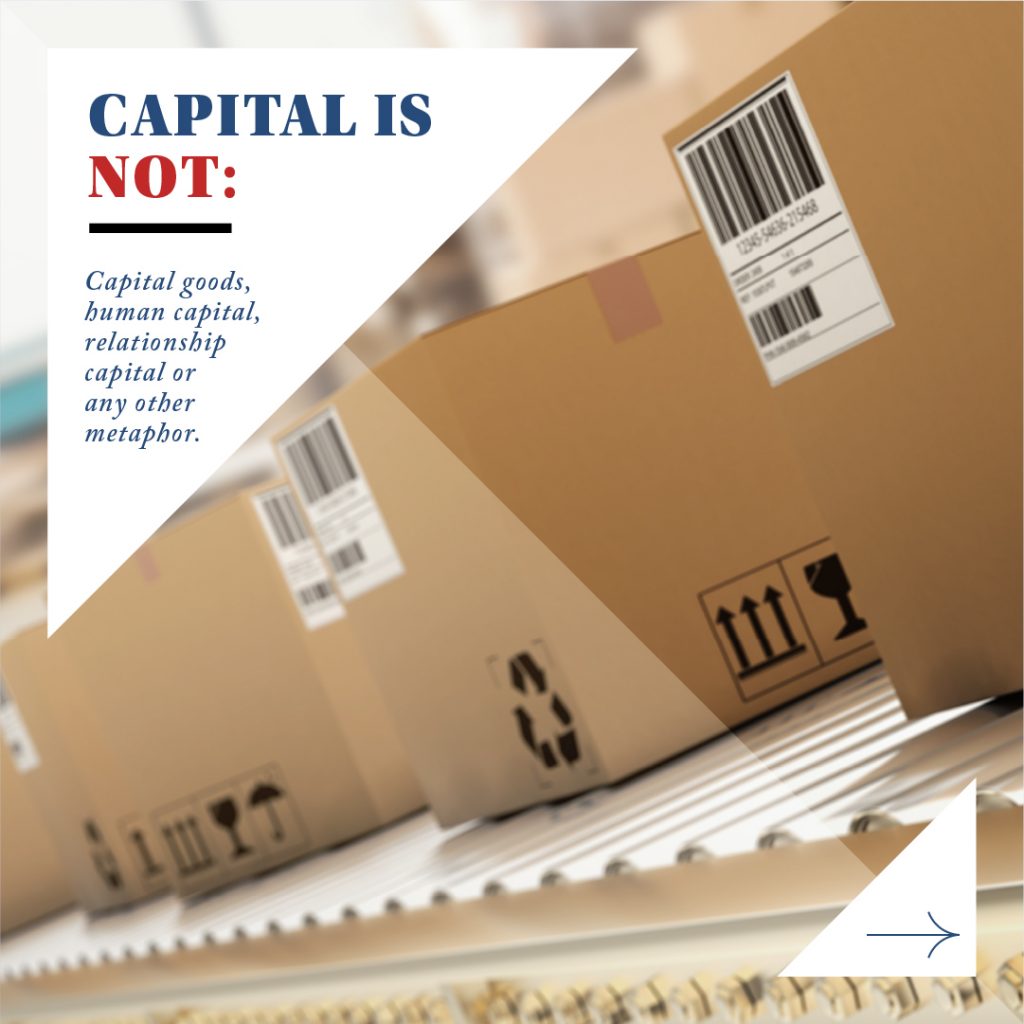87. Professor Matthew McCaffrey: The Austrian Definition of Capital and its Application for the Health of Your Business
Key Takeaways and Actionable Insights
An understanding of the Austrian definition of capital is tremendously useful to all business owners and managers.
What is capital? Austrian economics has a precise and distinctive definition — unlike business schools and most business publications, books, and columnists. Among those entities, the term capital tends to be used very imprecisely. You might see sentences like, “Entrepreneurs must ensure they have sufficient capital to get their new product to market”, or “to get to break-even”. Such usages imply that capital is a cash reserve to be “burned off” in the process of launching and scaling a business.
Recently, it has become fashionable to coin terms such as human capital, or brand capital, or relationship capital, or even spiritual capital or street capital. All of these terms are sloppy definitions of capital from an Austrian point of view.
And it’s important to note that capital is not the same as capital goods, which are “produced means of production”. Capital is not a means of production, it is a consequence of production.
What, then, is the precise Austrian definition of capital?
On the E4E podcast #87, Professor Matthew McCaffrey gives us this definition:
Capital is the monetary value of a business’s claims to income. This includes all of its marketable assets, whether they are tangible or intangible. It’s a sum of individual values. These values are ultimately determined by consumers, because the value of a firm’s assets and the value of its income streams ultimately depend on how consumers value the final product. Crucially, capital is distinct from what are called capital goods or production goods, which are the physical goods used in production. Those are also vital for understanding how entrepreneurship works in practice, but they are not capital in the sense in which we mean it.
In summary:
- Capital is a flow (rather than a stock)
- Coming into your business
- From consumers
- Reflecting the value consumers perceive in your company’s services.
B2B businesses can substitute the term “final purchasers” for consumers if producing goods and services purely for business customers. But it is important to remember that the value of capital always eventually reflects the valuations of goods and services by consumers. The software or professional services your B2B business provides to a business customer will command less of a claim to income if that business customer faces a change in preferences and a decline in market demand from their consumer population. When forecasting future income flows, every business must bear in mind the climate among ultimate consumers.
What are the implications for entrepreneurs and business managers?
- Flows can be generated via tangible or intangible assets.
- Consumers’ valuation of services is the key variable.
- Entrepreneurs must be able to appraise which assets — in which combinations — are generating the flow.
- The flow can change — even disappear — when consumer preferences change: entrepreneurs must be able to adjust.
- Large flows can result from a low asset base — and vice versa.
- Appraisal — predicting future prices and flows — is the vital skill to determine what to invest in, how to organize, and what to produce.
- Cash flow is the measurement variable.
- Use cash flow to calculate asset productivity.
- Update appraisals continuously based on cash flow.
What about capital goods?
- Capital is NOT the same as capital goods.
- But capital goods can be generators of capital flows.
- IF consumers value their output.
- Austrians stress HETEROGENEOUS capital goods, both tangible and intangible.
- A jigsaw puzzle to assemble, disassemble, and reassemble in the right combination, based on consumers’ valuations.
What actions should entrepreneurs take as a consequence of the Austrian view of capital?
- Always focus on the value you are facilitating from consumers.
- They, in turn, will generate your capital flow.
- Measure the flow in dollars — especially the trend.
- Be a master appraiser: know your asset productivity.
- Set up your assets for flexibility — be fully able to disassemble and reassemble capital combinations.
- Experiment frequently with different combinations.
- Become comfortable with continuous change in asset combinations.
Free Downloads & Extras From The Episode
Professor McCaffrey made reference to Frank Fetter’s role in defining capital in his online discussion, “Frank Fetter and the Austrian Tradition in the United States”: View Online Discussion
Professor Peter Klein explains why metaphors like Human Capital are unhelpful to entrepreneurs in his article, “A Note on Human Capital“: View Article
“The Austrian Business Model” (video): https://e4epod.com/model
Start Your Own Entrepreneurial Journey
Ready to put Austrian Economics knowledge from the podcast to work for your business? Start your own entrepreneurial journey.













Leave a Reply
Want to join the discussion?Feel free to contribute!